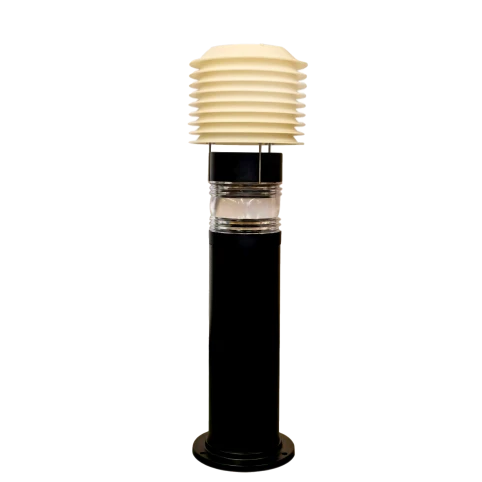
semi quantitative pcr
Yan . 25, 2025 02:09
Back to list
semi quantitative pcr
Semi-quantitative PCR technology has emerged as a frontline tool in molecular biology, offering researchers an indispensable method for DNA quantification and analysis. Unlike its quantitative PCR counterpart, semi-quantitative PCR provides relative rather than absolute quantifications, allowing scientists to compare the expression of a target gene relative to a control under varying experimental conditions. This technology has significantly contributed to fields such as genomics, diagnostics, and personalized medicine, by providing insights into gene expression levels without the need for complex instrumentation or extensive calibration.
Despite its benefits, semi-quantitative PCR does have limitations. Its reliance on gel electrophoresis and band intensity comparison can introduce subjective bias, as discrepancies in gel visualization and interpretation can affect results. To mitigate this, many researchers have adopted image analysis software that provides digital quantification of band intensities, improving both accuracy and consistency. In the ever-evolving landscape of molecular diagnostics, semi-quantitative PCR can also complement more advanced methodologies. For instance, it serves as a preliminary screening tool before proceeding to quantitative real-time PCR (qPCR) for detailed analysis. This integration of techniques allows researchers to efficiently allocate resources while still achieving high-throughput data generation. On a practical front, several commercial kits and reagents have been specifically designed to enhance the performance and applicability of semi-quantitative PCR. These products offer comprehensive solutions, including optimized primers, enhancers, and loading dyes, thus streamlining the workflow and reducing the potential for human error. Additionally, educational webinars and technical support provided by manufacturers contribute to the expertise and successful implementation of this technique in various research settings. In conclusion, semi-quantitative PCR stands out as a versatile and invaluable method for gene expression analysis. Its cost-effectiveness, ease of use, and ability to provide relative quantification make it a staple technique in molecular biology laboratories worldwide. Embracing the synergy of traditional and modern approaches to DNA analysis not only expands research capabilities but also ensures robust and accurate results across diverse scientific applications. As researchers continue to explore genetic underpinnings of disease and the development of new therapeutic strategies, semi-quantitative PCR will undoubtedly remain a key player in the molecular toolkit.


Despite its benefits, semi-quantitative PCR does have limitations. Its reliance on gel electrophoresis and band intensity comparison can introduce subjective bias, as discrepancies in gel visualization and interpretation can affect results. To mitigate this, many researchers have adopted image analysis software that provides digital quantification of band intensities, improving both accuracy and consistency. In the ever-evolving landscape of molecular diagnostics, semi-quantitative PCR can also complement more advanced methodologies. For instance, it serves as a preliminary screening tool before proceeding to quantitative real-time PCR (qPCR) for detailed analysis. This integration of techniques allows researchers to efficiently allocate resources while still achieving high-throughput data generation. On a practical front, several commercial kits and reagents have been specifically designed to enhance the performance and applicability of semi-quantitative PCR. These products offer comprehensive solutions, including optimized primers, enhancers, and loading dyes, thus streamlining the workflow and reducing the potential for human error. Additionally, educational webinars and technical support provided by manufacturers contribute to the expertise and successful implementation of this technique in various research settings. In conclusion, semi-quantitative PCR stands out as a versatile and invaluable method for gene expression analysis. Its cost-effectiveness, ease of use, and ability to provide relative quantification make it a staple technique in molecular biology laboratories worldwide. Embracing the synergy of traditional and modern approaches to DNA analysis not only expands research capabilities but also ensures robust and accurate results across diverse scientific applications. As researchers continue to explore genetic underpinnings of disease and the development of new therapeutic strategies, semi-quantitative PCR will undoubtedly remain a key player in the molecular toolkit.
Previous:
Next:
Latest news
-
TB Real Time PCR Accurate Monkeypox Virus Detection Kits & PCR SystemsNewsJul.08,2025
-
Biological Sampling Cycle Optimize Your Sampling with Advanced échantillonnage biologique SolutionsNewsJul.08,2025
-
COVID PCR ORF1ab Test Kit - Accurate Detection of Coronavirus Pneumonia Fast Results, Reliable SolutionNewsJul.08,2025
-
Influenza A Virus RT PCR Test Kit – Accurate Detection & Fast ResultsNewsJul.07,2025
-
PCR Is Used Applications & Advantages of PCR and RT PCR in Molecular BiologyNewsJul.07,2025
-
La Mycobactérienne de la Tuberculose DNA PCR Test – Rapid & Accurate Detection SolutionNewsJul.07,2025





